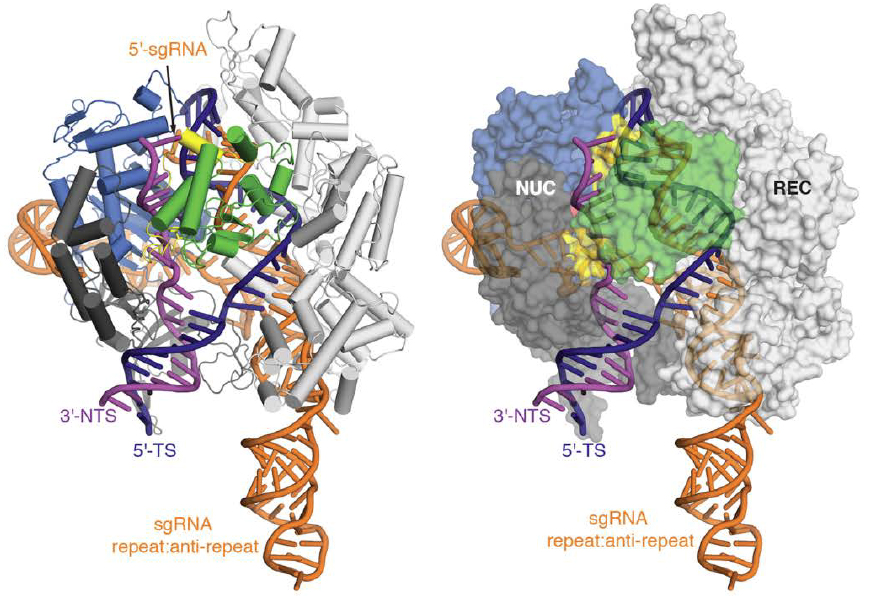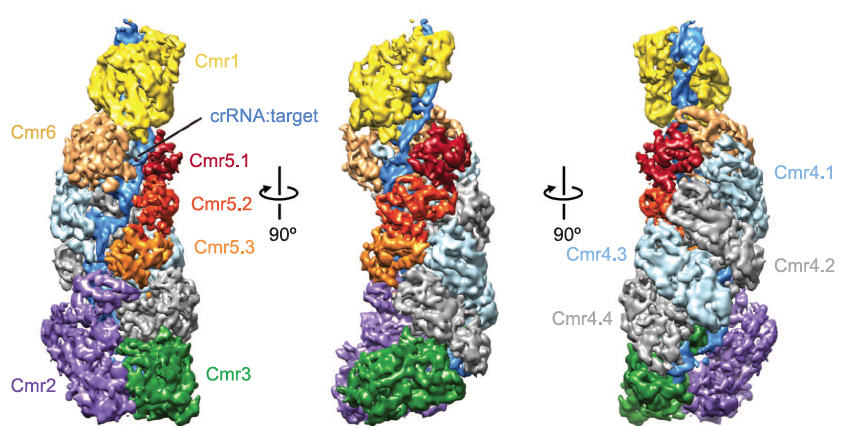CRISPR–Cas systems are highly diverse and have been divided into many subtypes. The Type I-E system in E. coli uses the Cascade complex for RNA-guided silencing of foreign DNA. Cascade is composed of Cse1, Cse2, Cas7, Cas5e, and Cas6e subunits and one crRNA, forming a structure that binds and unwinds dsDNA to form an R-loop. Recently, we used single-particle electron microscopy reconstructions of dsDNA-bound Cascade with and without Cas3 to reveal that Cascade positions the PAM-proximal end of the DNA duplex at the Cse1 subunit and near the site of Cas3 association. The finding that the DNA target and Cas3 colocalize with Cse1 implicates this subunit in a key target-validation step during DNA interference. We show biochemically that base pairing of the PAM region is unnecessary for target binding but critical for Cas3-mediated degradation. Together, these data show that the Cse1 subunit of Cascade functions as an essential partner of Cas3 by recognizing DNA target sites and positioning Cas3 adjacent to the PAM to ensure cleavage (in collaboration with Eva Nogales, UC Berkeley, HHMI).







 CRISPR RNA processing by Csy4
CRISPR RNA processing by Csy4  Self vs non-self discrimination during CRISPR immunity
Self vs non-self discrimination during CRISPR immunity  Type I-F foreign DNA targeting complex
Type I-F foreign DNA targeting complex 

